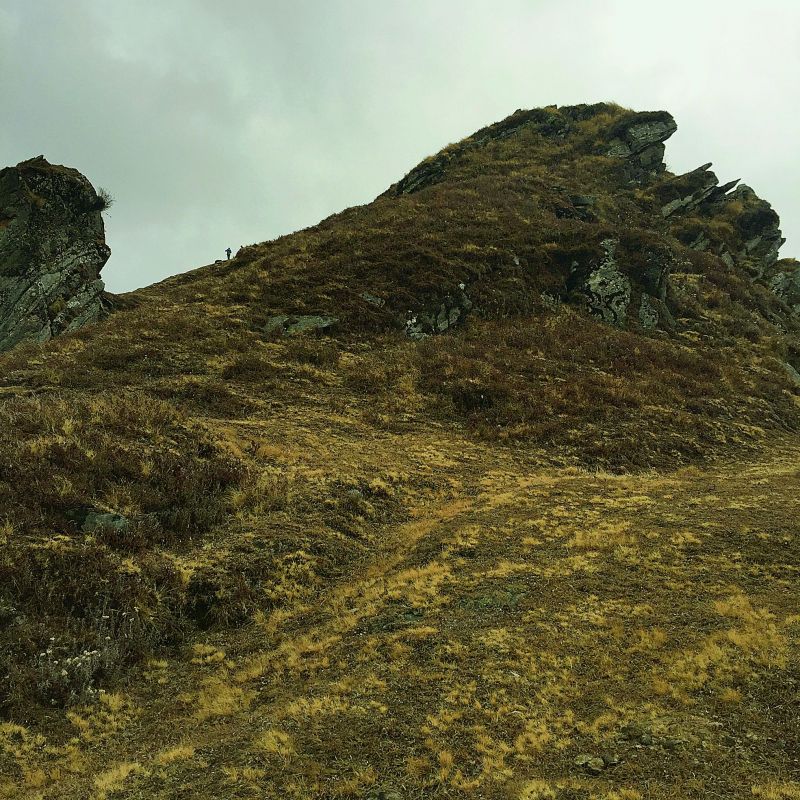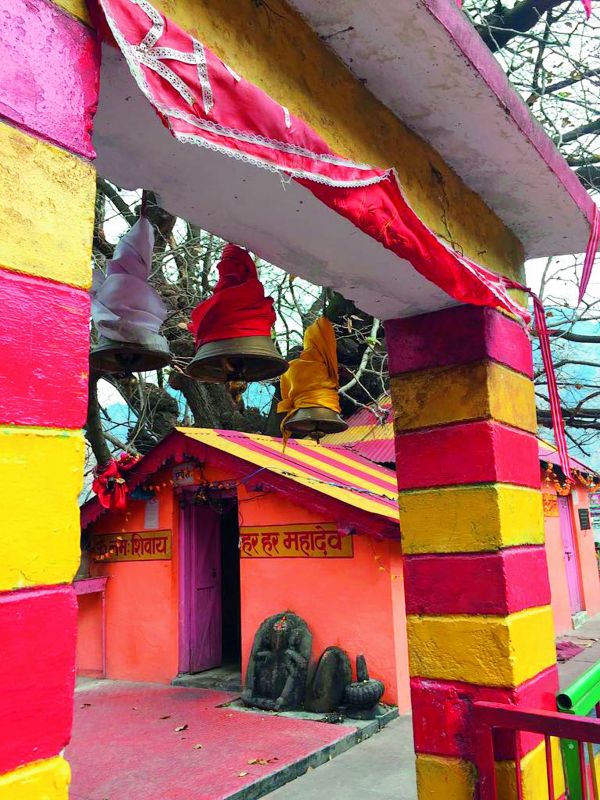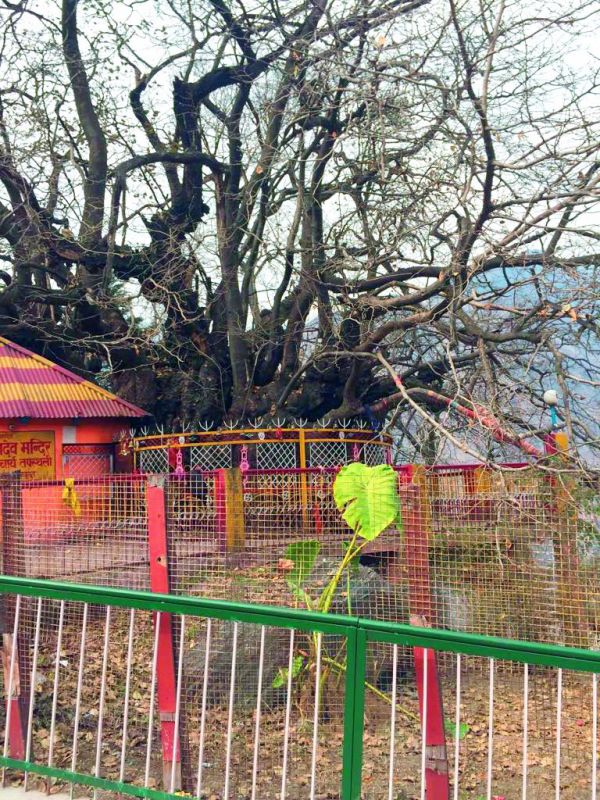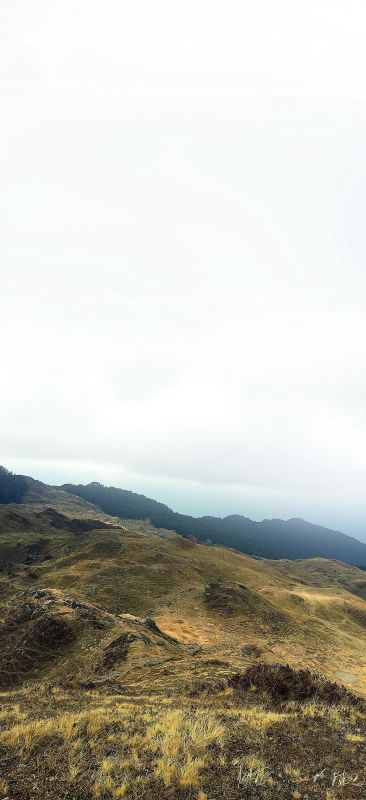Essentials for Auli
Auli is more than just a ski paradise. It offers great views and a base for explorations.

We are a group in search of snow. Not snow settled prettily on top of mountain peaks, not glistening in the sunlight so far away that we need to argue about whether it is clouds we are seeing or a line of snow peaks; what we want is snow falling gently from the sky. And then there is Nanda Devi. Three years in a row we have managed to see the mountain, either in all her majesty, or at least catch sight of her sister peaks, and Auli promises us the closest glimpse. So, come December, we take the long road from Rishikesh, and drive through crowded villages, and deserted hillsides, and look down steep slopes at the river that rushes downslope, away from where we are going, eager to reach Auli.
We do not stop till we get there. Night is waiting to take over from a fleeting dusk as we reach Joshimath. There is just enough light left to discern the narrow road that starts on a sharp curve and climbs steeply up towards Auli. After much changing of gears and a couple of false turns, we have, as Aunty Google would put it, ‘arrived at our destination’. Well, almost. For there are steps yet to be climbed and luggage to be carried up, to a room that is comfortable and snug, thank God, for in late December, Auli is preparing for snow. Already, the clerk at reception tells us with the air of who has hosted a royal visitor, that there has been heavy snowfall just a week ago. And more is sure to follow despite the sunny spell.
 The meadow that stretches for many kilometres into the wild, is dotted with rock outcrops that invite you to climb them.
The meadow that stretches for many kilometres into the wild, is dotted with rock outcrops that invite you to climb them.
We drag on extra sweaters and smile at the sky in anticipation. The stars twinkle mischeviously back at us. Come morning, we look eagerly out of the window. Nothing. Rush out to climb the slope and look into the distance. No snow. Nor is Nanda Devi anywhere in sight. And no other snowcapped peak either. “You have to climb up to the meadow, and then she is right there,” a fellow tourist helpfully tells us. So, after a hearty breakfast of puri and potatoes in the crowded common room of the GMVN Ski Resort, we take the chair lift that deposits us in ten quick minutes up a slope that the more intrepid take a few hours to climb. Down below a lake shivers in the cold breeze. And ahead of us the climb to the Auli Bugyal stretches, its gentle slopes inviting us.
 The Shiv temple at the spot where Adi Shankaracharya is said to have established a Shiv Ling.
The Shiv temple at the spot where Adi Shankaracharya is said to have established a Shiv Ling.
And most delightfully surprising is the fact that Nanda Devi stands upclose and larger than life, just beyond reach. It is an unusual view of the mountain, seen this time from a never before angle, and it needs getting used to. But the majesty of the country’s highest peak cannot be ignored. Evidence of the recent snowfall lingers, in the shady patches under the oak trees, and in strips of gleaming white in the hollows formed by the undulating slopes. Children scream and jump about, throwing fistfuls at each other. We climb up towards the meadow; the slope is deceptively easy on the eye, but not so on thighs and knees that are protesting at the sudden strain they are being put to.
 The Kalpavruksh tree. Bare in winter it grows lush as spring comes by
The Kalpavruksh tree. Bare in winter it grows lush as spring comes by
It takes two hours to walk to the edge of the climb, and the meadow stretches out as a flat land with outcroppings of rocks, all the way ahead as far as eye can see.
The last chair lift returns to the hotel at 4 pm, and resisting the tempation to explore further, we join the other tourists and turn back. But Nanda Devi and the unknown have a magnetism that will not be ignored. Emboldened by our expedition of the previous day, we repeat the route, and going faster with practice, have enough time on hand to venture far into the unknown. We climb the rocky hills, and look down on the landscape we have left behind that seems a mix of desert and forest. Oak, rhodrendron and the snow make for a colourful picture. Immediately below, the land is barren, treeless — ready for snow. As we turn back, the wind rises into a sharp song and seems armed with knives that threaten to cut through our jackets. And the sky is filled with clouds. Tonight, we tell ourselves, it will snow.
 Barren and rough, the meadow has a wild beauty
Barren and rough, the meadow has a wild beauty
The sun, not snow, wakes us the third morning. Time is running out. The receptionist promises us snow, if it should rain. And yes, the sky holds a few black clouds. Auli has little else to offer. Should it snow, we could possibly extend our trip and take up a short four day course in skiing. Basic skiing lessons are available for tourists, before the real season begins and the professional skiers take over. But the sky holds its secret, and we drive down to Joshimath to take in the sights the town has to offer. The road to the Badrinath shrine closes in early winter. And the Gods descend to Joshimath to ensure their safety and that of those who offer daily worship to them. The temple they are housed in is unpretentious, almost plain. But the Gods inside are housed with much ceremony, and in regal splendour. A pundit chants mantras for our welfare and hands out prasad. Unlike in many temples, he does not expect or demand money in return. Legend has it that visiting the temple in winter is as good as visiting the actual shrine in summer, and we walk out energised by the darshans within.
A short drive later, even as the wind whisks around us briskly, we climb a series of steps and a slope to visit the Kalpavruksh. Strangely, I discover, this venerable tree is neither a banyan not peepul, but a mulberry tree. Gnarled and knotted, bent and yet spreading its branches skywards, this tree has seen the centuries roll. The exact age of the tree that now inspires endless selfies is unknown, but if this is the tree under which Adi Shankaracharya meditated, as the board near it proclaims, it is at least a few centuries old. 1200 years to be exact. In recent years, the tree has had to be protected from worshippers who touch, pluck leaves of pieces of bark off it, and a wire fencing surrounds it safely away from human contact.
Adi Shankaracharya also established a Shivaling here, and a temple to Shiva now stands under the shade of the tree. Contrary to a publicity pamphlet that claims the tree is eternally in bloom, bare branches stare back at me as I walk around the 21.5 metres of its circumference, bowing my head as acknowledgment to Nature’s divine strength. As I watch the last few leaves twirling in the breeze, one detaches itself to land at my feet. I pick it up, and carry it safely nestled in my dupatta. A gift from a tree to a tree lover, worth preserving indeed. in a few days, the leaf crumbles, but it nestles in a plastic box, a memento from a century old living entity.
The Shankaracharya Mutt Joshimath is also sacred in its own right, for it was here that the interpid traveller and spiritual leader, Adi Shankaracharya is said to have launched his mission of reviving Hinduism in 632 AD. We take a quick look at the monastery said to be started by one of Adi Shankaracharya's disciples in the 8 th century, but the visit leaves us strangely unmoved. As evening falls and we repair to the warmth of our room, the weather turns. The sound of rain on the roof is music; it portends snow. We sleep fitfully, knowing that we are to depart the next morning. And this is the last chance of experiencing snow fall. The news of impending snowfall has spread, and we can hear cars driving in, till late into the night. Through the night, our trips to the window show nothing but a murky, starless sky.
As morning comes, we can see the snow. It comes like a curtain, moving over the mountains opposite. Bare till yesterday, they wear a dusting of white. It is an awesome sight, and we watch transfixed. And ask of each other whether the cloud will move to dust us with white too. But local wisdom says it may take yet another day or so for the snow to move across to Auli. And that comes with the possibility of being locked in, as driving down the winding road to Joshimath without snow chains on the tyres might be risky.
Reluctantly, we pack the car, hauling our bags in, our eyes still transfixed by the drama being played out on the mountains opposite. All through the long drive, I turn this way and that, unable to look away, as the jagged slopes soften and turn Christmas card perfect in the snowfall. Well, I tell myself, there will be a next time. And snowfall happens every year! And who knows, we may yet meet a snowstorm en route!
The writer is the Consulting Editor, Harper Collins Publishers India and Executive Director, Encyclomedia
Photo credit: Sathya Saran
